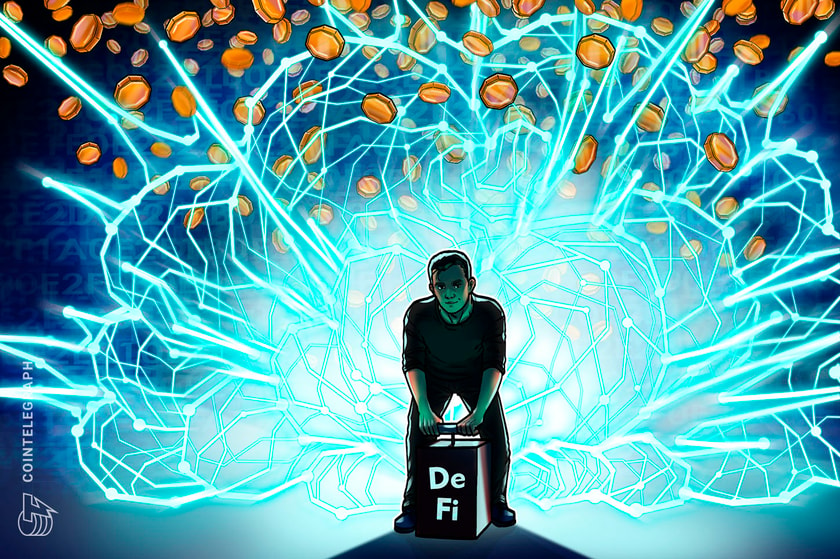Going parabolic: Producing viral notoriety in Web3

Crypto, memes and bad news have a similar adoption curve these days.
Chances are, in the past, you took up parabolas, exponents, logarithms and the power law in your math subjects in school. During that time, you probably thought it was just something you needed to pass, not really something you would have a practical use for in the future.
Another topic you probably studied in school was algebra, where you likely encountered the formula for a straight line, y = mx + b. Again, most likely you thought of all these as just topics you needed to understand and pass. But as you mature in this world, you realize that topics like logarithms and exponential functions do have uses. One such use is in modeling the parabolic popularity and adoption of memes, crypto, films, the spread of diseases like Covid — and even artificial intelligence.
Earlier in 2023, it was announced in the news that ChatGPT recently reached its 100 millionth user in a few weeks. It went from zero to 100 million in a few weeks after its launch late in 2022. That’s probably every marketer’s dream. We also heard that Silicon Valley Bank’s depositors withdrew their money and almost drained the bank’s coffers in the span of a few hours. Everything that happens these days seems to be on internet time — given the speed of networks and how word travels fast on social media.
In most of our experiences with previous businesses, our expectations are often more linear than parabolic. If you set up a coffee shop somewhere, maybe on the first day you’ll have five customers. Then on the second and third day, you’ll have seven to ten. On the fourth and fifth, maybe you’ll have more than ten, but it would probably take you some time to get to a thousand customers. Sure, your traditional business is growing but it is slow. It is a linear expectation type of business.
This is why when ChatGPT reported its one millionth and then one hundred millionth users just a few days apart, people were surprised. This is the same with the withdrawal speed at SVB, or crypto memecoins like Pepe, Doge and Shiba Inu. It’s not normally in their realm of expected outcomes.
Join the community where you can transform the future. Cointelegraph Innovation Circle brings blockchain technology leaders together to connect, collaborate and publish. Apply today
People are not normally used to parabolic outcomes. But disease vectors, crypto, AI and memes are often able to reach parabolic adoption given certain conditions. First of all, the wide availability of smartphones, laptops, fast internet and social media has accelerated adoption. When you post something on the web, within a few seconds, a few thousand to several million people may see it immediately.
Mathematically, that may mean, instead of the y = mx + b linear function, the function could be something where the expected number of adopters today could be squared, cubed — or even higher — of the number of people using it today. That could mean that two becomes four, and four becomes sixteen, or two becomes eight and eight becomes sixty-four, etc. So, it becomes more like how diseases spread, or how bacteria divide and multiply. It gets huge in a short period of time.
Inversely, this parabolic effect could also become a quick drop in popularity. Take for instance the potential negative impact on sales of a product due to controversial partnerships. In these cases, pushing an agenda that goes against the beliefs of the core target market can just as quickly push consumers to abandon a product.
The easiest way companies can use the parabolic effect for their products include attempting to trend using their hashtags on Twitter or getting on the news cycle with either bad news that dumps their product, good news that enhances it, or a catchy commercial or film placement. Anything that gets people talking in droves, that goes against the normal flow of things without appearing contrived, can drive topics to become viral.
If the content or application is really viral and interesting, then these people may immediately click and adopt it to at least test before they adopt it. Some might hesitate, some might test it and hate it and then some might like it. Then, they spread word of mouth — whether good or bad — about their experience to their friends and acquaintances.
Crypto, memes and bad news have a similar adoption curve these days. A cute doggie, frog or cat meme coin might receive defamatory remarks from intellectuals, but maybe they are just underestimating the number of people out there who like cute pets like cats and dogs. There might be different reasons for why meme fans buy, of course.
We now live in an age of parabolic power law adoption. The possibility is there, but it will only “go parabolic” if the application is not a “me too” one, but something new that unlocks a primordial human desire or need.
The information provided here is not investment, tax or financial advice. You should consult with a licensed professional for advice concerning your specific situation.
Zain Jaffer is the CEO of Zain Ventures focused on investments in Web3 and real estate.
This article was published through Cointelegraph Innovation Circle, a vetted organization of senior executives and experts in the blockchain technology industry who are building the future through the power of connections, collaboration and thought leadership. Opinions expressed do not necessarily reflect those of Cointelegraph.
Learn more about Cointelegraph Innovation Circle and see if you qualify to join









